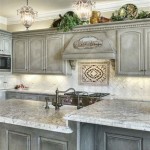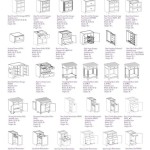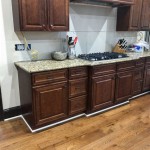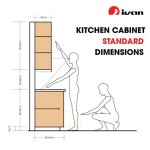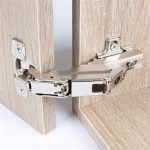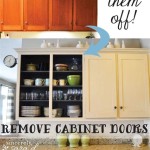Can I Wrap Kitchen Doors? A Comprehensive Guide
Renovating a kitchen can be a costly endeavor. Many homeowners seek cost-effective ways to update their kitchens without the expense of replacing entire cabinetry systems. Wrapping kitchen doors has emerged as a popular alternative, offering a fresh look without breaking the bank. This article explores the feasibility, benefits, drawbacks, and processes involved in wrapping kitchen doors.
Feasibility of Wrapping Kitchen Doors
Kitchen doors can indeed be wrapped. The success of the project, however, depends on several factors, including the material and condition of the doors and the type of wrap used. Suitable materials for wrapping generally include solid wood, MDF, and even some types of laminate. Doors with intricate detailing or heavy damage may present challenges, while smooth, flat surfaces are ideal candidates. The choice of vinyl wrap also significantly impacts the outcome, with higher quality wraps offering better durability and adhesion.
Benefits of Wrapping Kitchen Doors
Wrapping kitchen doors offers several advantages. The process is considerably less expensive than replacing entire doors, making it a budget-friendly option for kitchen updates. A vast range of colors, patterns, and textures are available in vinyl wraps, offering extensive design flexibility. The application process is relatively straightforward, allowing many homeowners to tackle the project themselves, further reducing costs. Furthermore, vinyl wraps provide a layer of protection to the original door surface, safeguarding against minor scratches and wear.
Drawbacks of Wrapping Kitchen Doors
While wrapping offers numerous benefits, some drawbacks warrant consideration. The longevity of vinyl wraps can be affected by factors such as heat, moisture, and cleaning methods. Lower quality wraps may be prone to bubbling, peeling, or fading over time, particularly in high-traffic areas. The application process, while generally simple, requires precision and patience to avoid imperfections. Intricate door designs can present challenges, potentially leading to creases or air bubbles. Finally, wrapping is generally not recommended for heavily damaged or warped doors.
Types of Vinyl Wraps for Kitchen Doors
Several types of vinyl wraps are suitable for kitchen doors. These include: *
Calendered Vinyl:
A cost-effective option, calendered vinyl is thinner and more flexible, making it suitable for smooth surfaces. However, its durability is lower compared to other types. *Cast Vinyl:
This type offers superior durability and conformability, making it ideal for complex shapes and textured surfaces. It is more resistant to fading and shrinking, making it a longer-lasting option. *Specialty Vinyl:
Specialty wraps include metallic, glitter, or textured finishes, allowing for unique design choices. These often come at a higher price point.Preparing Kitchen Doors for Wrapping
Proper preparation is crucial for a successful wrapping project. Begin by removing the doors from the cabinets and cleaning them thoroughly with a degreaser to remove any grease or grime. Repair any minor imperfections with wood filler and sand the surfaces smooth. Remove all hardware, including handles and hinges. Finally, clean the doors again with a tack cloth to remove any dust or debris. This meticulous preparation ensures optimal adhesion of the vinyl wrap.
Applying Vinyl Wrap to Kitchen Doors
The application process requires patience and precision. Start by measuring and cutting the vinyl to the appropriate size, allowing for a slight overhang. Peel back a small section of the backing paper and apply the vinyl to the door surface, starting from one corner. Use a squeegee or smoothing tool to work out any air bubbles and wrinkles, gradually peeling back the backing paper as you progress. Trim any excess vinyl with a sharp utility knife. Once the vinyl is applied, use heat from a heat gun or hairdryer to activate the adhesive and ensure a tight bond. Finally, reattach the hardware to the wrapped doors.
Maintaining Wrapped Kitchen Doors
Proper maintenance can extend the lifespan of the wrapped doors. Clean the surfaces regularly using a mild soap and water solution. Avoid abrasive cleaners or scrubbing pads, which can damage the vinyl. Address spills promptly to prevent staining. Excessive heat and direct sunlight should also be avoided to minimize fading and peeling. With careful maintenance, wrapped kitchen doors can provide an updated look for several years.
Alternatives to Wrapping Kitchen Doors
If wrapping is not a suitable option, several alternatives exist for updating kitchen doors. These include: *
Painting:
Painting offers a cost-effective and versatile way to change the color and finish of kitchen doors. *Refacing:
Refacing involves applying a new veneer over the existing door surface, providing a more durable and substantial update than wrapping. *Replacement:
Replacing doors entirely is the most expensive option, but it offers the greatest flexibility in terms of style and material.
Are Vinyl Wrap Kitchens Any Good Wespray

Painting Kitchen Cupboards Vs Vinyl Wrapping Wrap Upvc Spray Services

How Much Does Kitchen Door Wrapping Cost In 2024 Checkatrade

Vinyl Wrap Kitchen Doors Vs Painted The Door Company

Vinyl Wrap For Kitchen Cupboard Doors Restoration

Vinyl Wrapping Kitchens Doors Windows Wardrobes

Vinyl Wrapped Kitchen Doors Wrap Cabinets

How Much Does Kitchen Door Wrapping Cost In 2024 Checkatrade

Mdf Vinyl Kitchens Strip Repair Prep Respray

How Replacement Kitchen Cabinet Doors Can Boost Your Home Value
Related Posts


